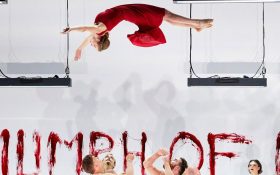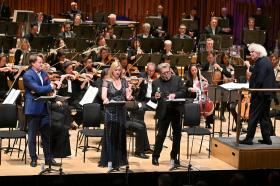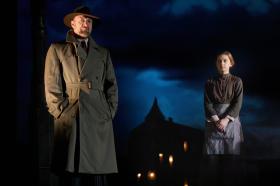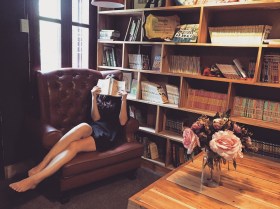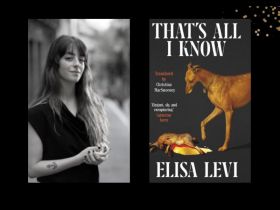Two months ago, Arts Hub spoke to a London-based artist in the process of curating her first contemporary art exhibition. Through Leave to Remain, which will be held as part of Refugee Week celebrations next month, Margareta Kern hopes to give greater visibility to artists who have sought refuge and political asylum in the UK, but also, to raise awareness about the representation and marginalisation of ‘refugee artists’. However, as Kern puts the finishing touches on the exhibition, she says the project has brought to light the complexity of issues surrounding what it means to be an artist – as well as a refugee.
The curatorial process, says Kern, has highlighted the fact that not only do the terms ‘refugee’ and ‘asylum seeker’ have negative connotations, but she found that ‘refugee artist’ is also a problematic term.
Being described only as a ‘refugee artist’, Kern says, can imply that the individual is limited to art sprung from the experience of being a refugee, and therefore, can only create work dealing with suffering.
‘It [the exhibition] has also highlighted a struggle by artists who have come to the UK under circumstances of political and social unrest in their own country, to build a strong artistic career here [in the UK],’ Kern observes. ‘So, maybe it’s time for some “Young Not-so-British Artists” to be given some visibility.’
Kern was inspired to hold an exhibition for artists who are refugees and asylum seekers in the UK, after her own experience of displacement from Bosnia in 1992, and the endless process of asylum and visa applications this triggered.
The title of the exhibition, Leave to Remain, plays on the Home Office terminology for a visa allowing an applicant to stay in the UK for a limited or an indefinite period of time. Exceptional leave to remain (ELR) is a different category of visa and is granted to applicants who have applied for asylum.
The fact that Kern found common threads among participating artists in their struggles to establish a strong career in the UK, is reflective of her own experience and the obstacles she has had to overcome.
‘When I arrived in the UK, and for some of the time I’ve spent in London, I have found it difficult to break out of the “immigrant” tag, where it’s almost expected of me not to do well in my career,’ she told Arts Hub recently.
‘I believe that is the main obstacle to settling in the UK – not to see oneself as separate and undeserving of all the opportunities available.’
The 11 artists featured in the Leave to Remain exhibition come from a diverse range of troubled countries, including Croatia, Bosnia and Herzegovina, Ecuador, Iran, Romania, Iraq and Tibet.
‘We received many applications, and overall I am very pleased with the quality of work,’ Kern comments.
The selected artists create across a variety of media, including sculpture, painting, textiles, documentary film, and photography.
Kern’s own contribution to the show, Standard Class Opinions, will involve herself and an assistant hopping aboard standard class train carriages and asking passengers questions about asylum seekers coming to the UK. Passport-style photos of the respondents, along with recordings of passengers’ answers, will form part of a site-specific installation.
Leave to Remain is one of over 300 public events taking place around the UK as part of the fifth annual Refugee Week next month. The event is a celebration of the economic and cultural contribution that refugees and asylum seekers make to the UK, and aims to promote understanding of the reasons why people seek sanctuary.
The week-long event kicks off with a Celebrating Sanctuary showcase in both Birmingham (June 14) and on London’s South Bank (June 15), featuring music, dance, theatre, exhibitions and films created by and about refugees and asylum seekers.
A host of other events have been specially created for Refugee Week, including one organised by Exiled Writers Ink!, an organisation providing regular meetings, events and conferences for refugee writers, poets and journalists.
Exiled Writers Ink! will present an ‘experimental interdisciplinary theatre event’ it has created for Refugee Week with Somali women from the Horn of Africa Women’s Association, entitled Breaking the Silence: Somali Women Speak Out, at the Soho Theatre and Writers’ Centre.
For Margareta Kern, the artistic and personal rewards of her contribution to Refugee Week are already visible – and the exhibition hasn’t even launched yet. ‘It’s been an incredible time, for me personally, as a curator, organiser and participating artist,’ she reflects.
But now, with the opening just two weeks away, Kern is looking forward to promoting the ‘visibility’ of other artists. Artists who, apart from being professionals in their own right, also happen to be refugees and asylum seekers.
‘Leave to Remain’ runs for the duration of Refugee Week, from June 16-22. For further information on the exhibition visit www.leavetoremain.org and CLICK HERE to find out about a fundraising initiative supporting the exhibition.
Related Articles
31.03.03 Exploring the irony of ‘Leave to Remain’
